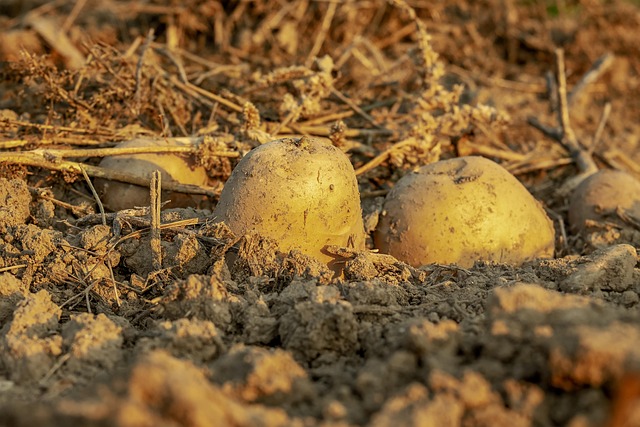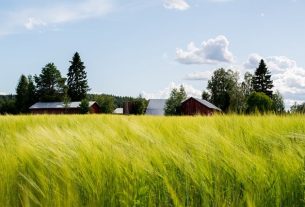Imagine a farm, fields barren and cracked. The crops barely survive, and the farmer is at their wits end. Poor soil health is a common problem, and it impacts yields. Luckily, there are simple ways to improve soil health quickly and turn things around. This guide will give you the tools to do just that!
Understand Your Soil: The First Step to Improvement
Before you dive in, you need to know what you are working with. Is your soil too acidic? Is it lacking essential nutrients? Knowing the specifics is key. Don’t just guess, test!
Soil Testing Basics
Grab a shovel and a bucket. Take samples from different spots in your field. Mix them together. Send a portion to a soil testing lab. They will analyze it for you. Look for tests that measure pH, nutrient levels (like nitrogen, phosphorus, and potassium), and organic matter. These parameters will show you the health of your soil.
Visual Assessment: Reading the Land
You can learn a lot just by looking at your soil. Healthy soil is usually dark in color. It has a crumbly structure. Water should soak in quickly. Watch out for hard, compacted layers. Bare spots and signs of erosion are also something to look out for. All these things give you a hint about your soil’s health.
Boost Organic Matter: The Heart of Healthy Soil
Organic matter is like food for your soil. It feeds the microbes. It also improves water retention. Plus, it boosts nutrient availability. More organic matter equals healthier soil.
Cover Cropping Strategies
Cover crops are plants you grow to protect and enrich the soil. Plant legumes, like clover or beans. They add nitrogen to the soil. Or, use grasses to prevent erosion. Incorporating cover crops into your system is easier than you think.
Composting and Manure Management
Compost is decomposed organic matter. Manure is animal waste. Both are great soil amendments. They add nutrients and improve soil structure. Make sure to compost properly. This kills harmful pathogens. Apply manure carefully. This prevents nutrient runoff.
Minimize Soil Disturbance: Protect the Soil Structure
Tilling can damage soil structure. It breaks up aggregates. It also releases carbon into the atmosphere. Minimizing disturbance helps keep your soil healthy.
No-Till Farming Techniques
No-till farming means planting crops directly into the residue of the previous crop. You don’t plow or till the soil. This reduces erosion. It also improves water infiltration. Plus, it increases carbon in the soil. Special equipment is needed to achieve this.
Reduced Tillage Methods
Reduced tillage is a compromise. It minimizes soil disturbance. Strip-till involves tilling only narrow strips where you’ll plant. Ridge-till involves planting on raised beds that are permanent. Each method has its own benefits and drawbacks. The right choice depends on your farm.
Optimize Nutrient Management: Feed Your Soil and Crops
Healthy soil needs the right nutrients. Too much or too little can cause problems. It’s important to feed the soil and crops correctly. Use fertilizer responsibly.
Soil-Specific Fertilizer Application
Don’t just guess how much fertilizer to use. Use your soil test results. Apply only what your soil needs. Organic fertilizers, like compost and manure, release nutrients slowly. Synthetic fertilizers provide nutrients quickly. Think about how each affects soil health.
Crop Rotation for Nutrient Cycling
Crop rotation is a way to improve nutrient availability. It also reduces the need for synthetic fertilizers. For example, planting corn after soybeans can boost nitrogen levels. Rotating crops can keep your soil healthy. This is a method worth adopting.
Improve Water Management: Essential for Soil Health
Water is vital for soil health. Too much or too little can be damaging. Good water management means using irrigation and drainage wisely. This helps manage soil moisture.
Efficient Irrigation Practices
Drip irrigation delivers water directly to the plant roots. Sprinkler irrigation sprays water over the field. Drip irrigation is more efficient and better for soil health. Conserving water helps protect this resource.
Drainage Solutions for Waterlogged Soils
Waterlogged soils lack oxygen. This harms plant roots. Proper drainage is important for soil aeration. Install drain tiles to remove excess water. This helps plants thrive.
Conclusion
Improving your farm soil health doesn’t have to take forever. By understanding your soil, boosting organic matter, minimizing disturbance, optimizing nutrient management, and improving water management, you can see results fast. Investing in soil health brings long-term rewards. Why wait? Start implementing these strategies on your farm today!



